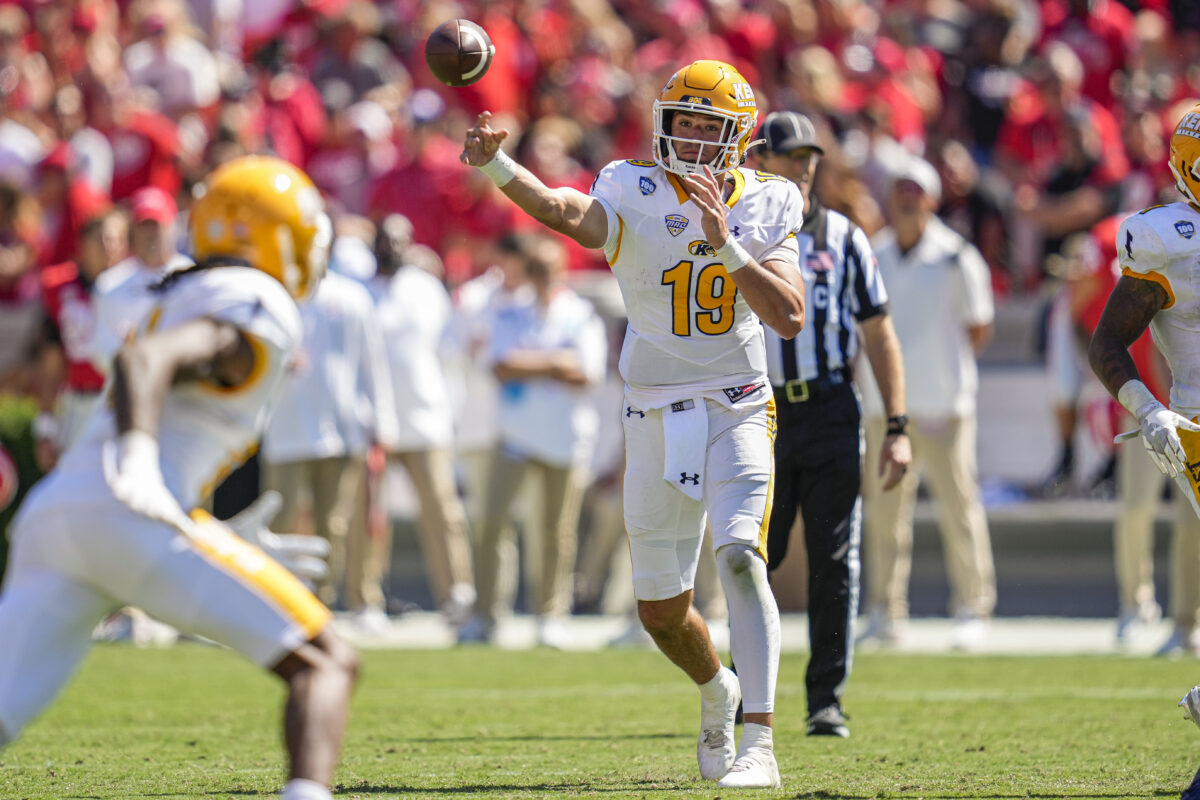Prior to his arrival in Pullman as the new head coach for Washington State, Nick Rolovich was thought of as a relatively “woke” coach with a deep understanding of how to connect with players. In less than seven months and without even coaching a season, Rolovich has — at first glance — shown just how fake that persona was.
There could be more to this story we don’t yet know about, but we can still say that Rolovich looked really bad this past weekend. How did Rolovich accomplish this without ever coaching a down in Pullman? He opened his mouth when he shouldn’t have:
While Washington State tries to wrestle with this situation, it can’t ignore that its new coach took a stand… and it wasn’t on the side of his new players in a pandemic, set against the backdrop of racial turmoil in this country.
Adding to the complexity of the situation is a list of demands sent from various Pac-12 players posted on the Players Tribune this past Sunday morning. These demands range from a cut of the profits generated by collegiate athletics to guaranteed six-year scholarships and beyond. The demands aren’t too far removed from what professional players receive, especially the revenue share of games. The article didn’t include specific names, but as Sunday continued, players were identified as being associated with the #WeAreUnited movement:
There wasn’t a player on the USC Trojans’ roster, but as more Pac-12 athletes step forward, USC will be in the position to do exactly what Nick Rolovich did not do: Publicly support its athletes. While it seems unlikely that USC would do this, stranger things have and happened. Also, if we’re being honest, this is the year 2020; “strange” is absolutely on the table for anything and everything. Also, what would it really cost USC to support a player doing this?
The player is going to lose eligibility if he has already burned a redshirt. (In other words, if the season is played and that player participates in at least four games.) The players who know this are willing to sacrifice that eligibility for the chance to improve other players’ lives long after they’re done playing. It’s a calculated risk and one that, if we’re being honest, hurts the player more than it hurts the team. It does hurt the team to a degree, but it also has to hurt the player or the protest wouldn’t have any impact. The team can replace that player with another four or five-star athlete. The athlete can’t move to a different school and get those years back. They’re gone.
So, knowing that it hurts the player more than the team, the Trojans have the chance to stand behind a player and support his activism in trying to make the Pac-12 a better league for everyone. What folks don’t seem to understand with these demands is that a rising tide lifts all boats. What does that mean in relation to these demands? Let’s take a brief look.
Let’s say these demands are met to some degree in an effort to solve the problem. The Pac-12 might look different to some recruits outside the league’s footprint. It wouldn’t be a magic bullet, but it could change some decisions for some players. Why would a football player want to go to Alabama and win a national title when he could go to the Pac-12 and make a decent chunk of change while also competing for a national title?
That might be an exaggerated view of the situation, but the main emphasis is that the Pac-12 might get a fresh look from some athletes who currently go to other Power Five conferences. As such, even minor schools in the Pac-12 would see an improvement in recruiting and their on-field play as a result of this. The overflow of players would have to go somewhere and the smaller schools would still be paying their athletes.
The better the players, the better the product. The games might be in greater demand. Pac-12 coaches could have more success to bring to their athletic directors when they talk about performance reviews. They could get tidy raises.
This isn’t going to happen quickly. It certainly won’t happen all at once. Such a rosy scenario shouldn’t be expected… but the larger point of emphasis is that if the Pac-12 athletes leverage their situation at a time when college football is clearly acting as though football players are very important to the economic well-being of schools, the results could be surprisingly good, better than one might currently realize.
USC showing some support to athletes who are part of the We Are United movement could send a significant message at little to no cost to the school. What’s the old expression? “It doesn’t cost much to be kind.”
Even the smallest gesture of goodwill could show high-school athletes that the USC leadership and administrative ranks are cognizant of the needs of modern-day athletes. It’s a low-risk scenario. They show support to the players without taking a shot at the Pac-12 or the NCAA.
It would also show those who have supported USC over the years that USC supports them, too. That has to count for something. In fact, it should count for a lot.
We will soon see how USC’s place in the evolving world of the Pac-12 will change.



